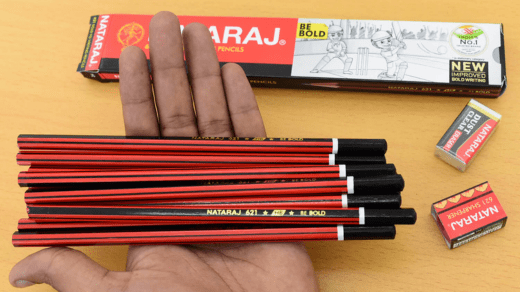When we think of everyday objects, the humble pencil might not be the first thing that comes to mind. However, the process of crafting and packaging pencils involves a remarkable blend of precision and craftsmanship that often goes unnoticed. From the selection of materials to the final packaging, each step in the journey of pencil production is a testament to human ingenuity. In this article, we will delve into the fascinating world of Pencil Packing Job, uncovering the intricacies that make this seemingly simple product a true work of art.
Pencils have been a staple of human creativity and communication for centuries. Behind the seemingly straightforward exterior of a pencil lies a process that involves careful planning, meticulous craftsmanship, and a keen focus on precision. In this article, we will explore the various aspects that contribute to the art of pencil packing, shedding light on the behind-the-scenes work that transforms raw materials into a tool that is both functional and aesthetically pleasing.
The Origins of Pencil Packing
The history of pencil packing can be traced back to ancient civilizations, where early writing instruments were often pieces of lead encased in materials like reed or bamboo. Over time, advancements in technology and craftsmanship led to the development of the modern wooden pencil. The challenge of protecting the delicate graphite core while ensuring ease of use paved the way for innovative packing techniques.
Selecting the Perfect Graphite Core
The heart of every pencil is its graphite core. Manufacturers carefully select graphite with specific qualities to achieve the desired darkness and smoothness of the pencil marks. Achieving consistency in the core’s composition is crucial for maintaining uniform writing quality across the entire pencil set.
Crafting the Ideal Wooden Encasing
The encasing of a pencil requires meticulous woodworking skills. Craftsmen carefully shape and finish the wood to create a comfortable and ergonomic exterior. The choice of wood plays a significant role in the pencil’s aesthetics, texture, and durability.
Ensuring Durability and Longevity
A well-packaged pencil is designed to withstand the test of time. Manufacturers use various methods, such as kiln drying and lacquering, to enhance the pencil’s resilience and prevent it from splintering or breaking during use.
Designing for Comfort and Functionality
Pencil packing is not just about protection; it’s also about user experience. The shape, size, and weight of the pencil are carefully considered to ensure comfortable grip and ease of use. Ergonomic design principles are applied to cater to a wide range of users.
The Role of Aesthetics in Pencil Packing
The aesthetics of pencil packing go beyond functionality. The choice of colors, patterns, and branding on the pencil’s exterior contributes to its visual appeal and marketability. A beautifully packaged pencil can evoke emotions and make a statement about its intended purpose.
Precision Sharpening: From Factory to User
The sharpening process is another critical aspect of pencil packing. Manufacturers utilize precise sharpening techniques to ensure that the pencil tip is perfectly shaped, allowing for precise lines and shading. Some pencil sets even include specialized sharpeners to maintain the pencil’s performance.
Sustainable Packaging Practices
In an era of environmental consciousness, pencil manufacturers are adopting sustainable packaging practices. Biodegradable materials, reduced plastic usage, and eco-friendly inks are becoming integral to pencil packing, aligning with the growing demand for environmentally responsible products.
The Evolution of Pencil Packing Technology
As technology advances, so does pencil packing. Automated machinery, computer-aided design, and innovative materials are shaping the future of pencil production. These advancements streamline the packing process, enhance quality control, and offer opportunities for creative packaging solutions.
Artisanal Pencil Packing: A Niche Market
While mass-produced pencils dominate the market, there is a niche for artisanal pencil packing. Handcrafted pencils, often made in limited quantities, appeal to collectors and individuals who appreciate the artistry and uniqueness of these specialized creations.
Pencil Sets: Curating Creativity
Pencil sets are more than just a collection of writing tools; they are a curated selection of artistic potential. Manufacturers and artists collaborate to create themed sets that cater to specific creative endeavors, such as sketching, coloring, or technical drawing.
The Sentimental Value of Pencil Packing
Pencils often hold sentimental value, reminding us of childhood memories, artistic pursuits, and moments of inspiration. The act of unpacking a fresh set of pencils can evoke a sense of anticipation and nostalgia.
Future Innovations in Pencil Packaging
As technology and design continue to evolve, the future of pencil packing looks promising. From interactive packaging that integrates with digital devices to sustainable innovations that reduce environmental impact, the pencil industry is poised for exciting changes.
Conclusion The art of pencil packing transcends its utilitarian nature, embodying precision, craftsmanship, and creativity. From the careful selection of materials to the ergonomic design and sustainable packaging, each aspect contributes to the overall experience of using a pencil. So, the next time you pick up a pencil to jot down your thoughts or create a masterpiece, take a moment to appreciate the intricate artistry that goes into its packaging.

